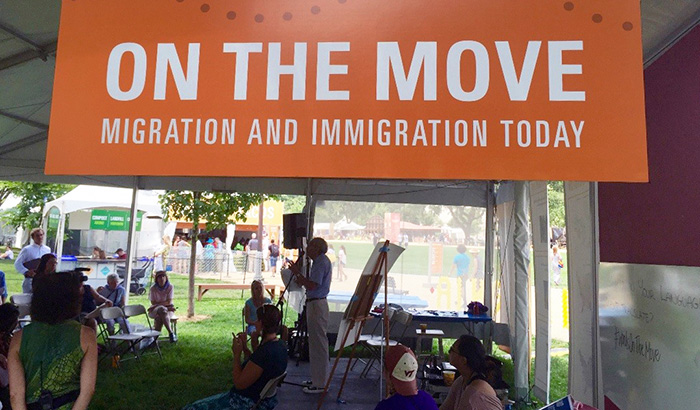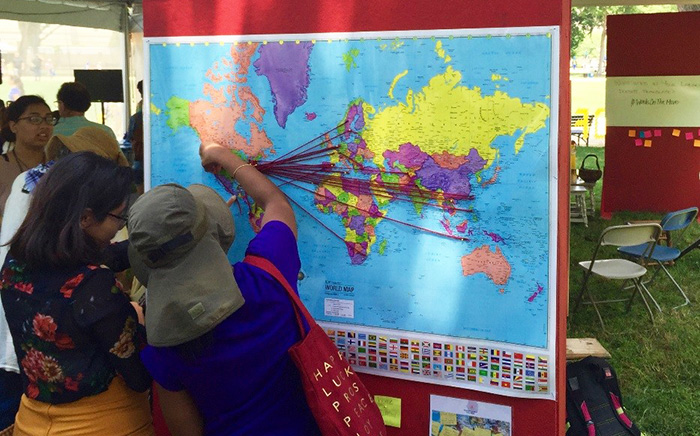On the Move: Visitor Engagement on Immigration and Migration

Nestled between two bustling areas—food concessions and the Sounds of California—the On the Move: Migration and Immigration Today tent engaged visitors in conversations beyond the polarizing political debates currently taking place within our society. Using interactive activities and hosting daily presentations in multiple formats, On the Move pushed visitors to think about how immigration and migration affects their own lives, families, and communities.
Despite the steep competition for visitors’ attention, On the Move drew attendees who were curious about the large U.S. and world maps that framed the tent’s exterior. Guests were invited to mark three points on a map: where they were born, where they live now, and where they call home. The third question spurred conversations about how “home” is defined, how this place has or has not changed over time, and how this movement and these changing definitions impact how we define ourselves and our relationships to those communities.

The majority of visitors with whom we interacted identified the District-Maryland-Virginia (DMV) area as their current place of residence, but listed other locations as their home. It was interesting seeing the various locations people have traveled from, both inside the United States and globally, before arriving in the D.C. area. Not surprisingly, these multi-location trajectories that radiate out of and into D.C. highlight the increasing diversity of the region.
In addition to these physical mapping activities, On the Move volunteers also invited visitors to participate in a digital survey about how immigration and migration impacts their lives and communities. Each day, the anonymous survey responses were added to a database, which then generated a series of graphic representations of visitor responses. These were displayed in a scrolling video in the Arts and Industries Building, where additional volunteers were stationed to discuss survey results.

Based on our experiences, visitors were interested in engaging with others on the topic of immigration and the specific experiences of their own families. While many On the Move presentations directly involved visitors in activities or conversation, we got the sense that they would have welcomed even more opportunities for interaction, especially among other visitors. Increased visitor-to-visitor interaction, facilitated by staff and volunteers, could lead to more conversations about cross-cultural connections, the varied meanings of home, and even more impactful discussions about issues related to migration and immigration today.
Raquel Escobar and Priscila Hernandez are fellows in the 2016 Smithsonian Latino Museum Studies Program. Escobar is doctoral candidate in history at the University of Illinois at Urbana-Champaign. Hernandez recently earned her master’s degree in Latin American studies at the University of New Mexico.

